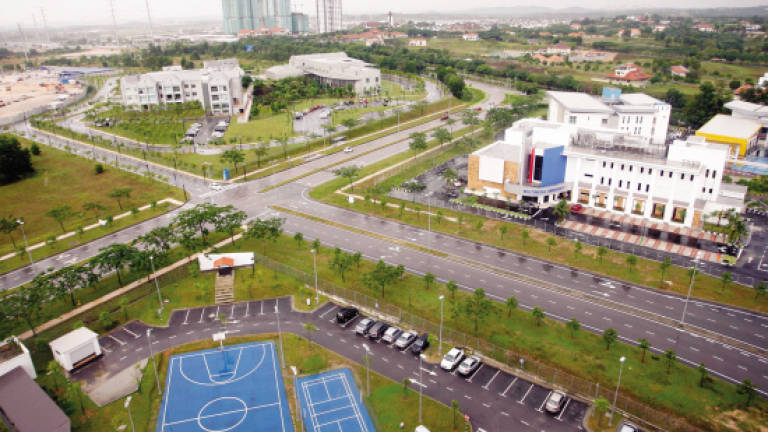EduCity fast taking shape


EduCity Iskandar Malaysia is ambitious and bold, and typical of a catalytic project, there will be challenges. The developers, however, are confident these difficulties are not insurmountable.
Teething problems "will sooner or later be ironed out", says Education@Iskandar Sdn Bhd managing director Joanne Jacinta Oei, commenting on some seemingly negative perceptions about the development.
Oei says, "Everything is on schedule as targeted by 2020, and EduCity Iskandar Malaysia will realise its goal of becoming a world-class education hub.
"EduCity is a brilliant concept and it will work. It was zero ground in 2007 and this year, we will see the first cohort of students graduating. However it is still early days and we are doing all we can to overcome the initial issues to ensure the success of the EduCity vision."
theSun visited the development recently to have a first-hand account of things. This writer, upon setting foot there, can testify it is work in progress and developments are at a brisk pace.
Playing host to me was Oei herself who took time to set the record straight on a few matters.
How would you sum up EduCity's progress thus far?
EduCity has come a very long way from when it was first conceptualised. Our own KPI (key performance indicator) was to fill the 305 acres in 10 years and after just six years, we have welcomed nine institutions into EduCity—each internationally renowned and with a recognised brand.
These institutes have also progressed very well in kick-starting their operations. Newcastle University Medicine Malaysia (NUMed) and University of Southampton Malaysia Campus are fully operational from their own buildings in EduCity. University of Reading Malaysia has also commenced classes from a temporary site while their building is being constructed.
Our sports complex was opened last year and officially launched in January this year by the Prime Minister.
The 6,000-seater sports complex is now open to public and in the future, it will expand to a 12,000-seater stadium.
On the whole, we are doing very well. As with any mammoth development the size of EduCity, we have experienced some growing pains in our early days.
However, we are still committed to delivering and sustaining a very high standard of education for the talent we want to develop through EduCity.
What are the problems to iron out?
We are addressing the lack of student accommodation, and have already started planning for the next phase.
Coming from the developer's perspective, we have and are always developing comprehensive plans to address demand for accommodation as student numbers increase.
We are in contact with the institutions to closely monitor their projected student numbers so that our plans are aligned to meet the numbers accordingly.
IRDA (Iskandar Regional Development Authority) is working on a public transportation blue print for the region. In the meantime, we are providing shuttle service for students to move around EduCity and the nearby areas.
In addition, we are building upon the existing retail, F&B and social offerings for the students and faculty.
We are doing things progressively, slowly but surely, and we will get there.
What has EduCity done to attract people to it?
We strongly support the institutions in EduCity to retain their autonomy regarding their operations, including their marketing, as they have the best knowledge of their offering and brand.
We market EduCity on a strategic level, including its unique model and the diverse course offerings by the institutions. These are done through our participation in conferences, talks and exhibitions.
We want to raise awareness of EduCity and at the same time raise awareness of the universities in EduCity.
If we get questions about individual institutes, we will answer to the best of our abilities but will always direct the query to the institutes for in-depth information.
Where are EduCity's students and staff from?
In the case of Raffles University Malaysia, for example, I can roughly say that 90% of the lecturers are foreign, and that is by design because their standards are really high. I don't think there is a hard and fast rule as our purpose has always been to offer Malaysian students the opportunity to have a top quality international education closer to home.
International students help with the whole concept of EduCity. When these students come in, it helps with the exchange of culture, people learn from each other, and standards are raised.
What are your comments on some of the issues faced by the institutions?
I sympathise with them but the Ministry of Education sets their guidelines for a certain purpose, and that is to ensure there is a certain standard of education that foreign institutions bring to Malaysia.
The same goes with visas. They want to ensure that students come in for the purpose of study and not any other reasons. Everywhere in the world, they are strict on this. IRDA is helping with this issue and are working with our partners when necessary.
It takes a lot of working together with different authorities to make things work and this is not just for EduCity. All partners and institutions have to work together with the ministry and see what can be done.